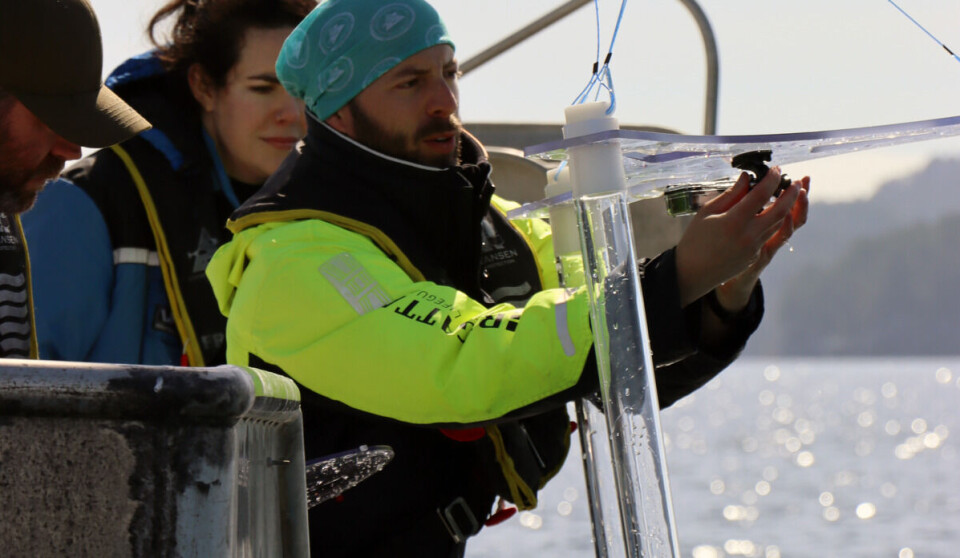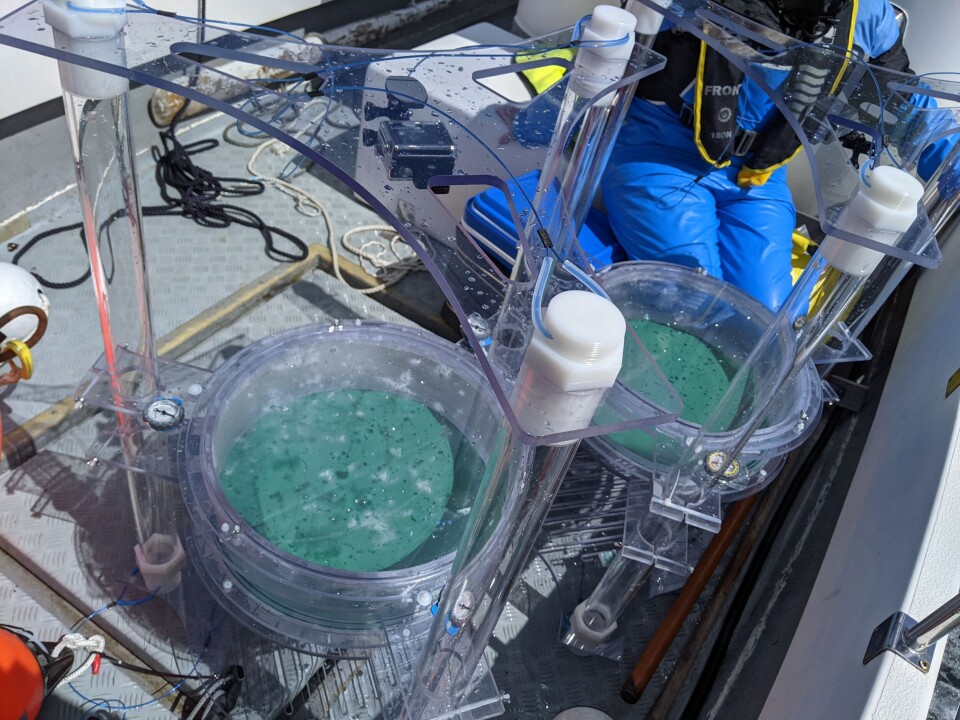THIS ARTICLE/PRESS RELEASE IS PAID FOR AND PRESENTED BY the Institute of Marine Research - read more

Cod larvae were attracted by the noise from wind turbines
The cod larvae swam towards the noise.
When the turbines are operating, they create a constant, low-frequency underwater noise that spreads out from an offshore wind farm.
“We already know that fish and other sea creatures are sensitive to sounds, and that some species react to low-frequency underwater noise,” Alessandro Cresci says.
He is a marine scientist at the Institute of Marine Research (IMR).
“What we don’t know is how fish, particularly in their early larval life stage, react to the sound of offshore wind turbines. This is a new industry, particularly here in Norway," he says.
Filmed larvae in floating cages
Cod is one of the species that is sensitive to low-frequency noise.
In order to learn how cod in the North Sea may react to the planned offshore wind farms, the researchers carried out a practical experiment: They recreated the situation in a fjord, albeit on a smaller scale.
“We filmed cod larvae drifting naturally in the water inside transparent acrylic cages with mesh walls. While the cages were drifting in the water, we used a loudspeaker to emit a constant, low-frequency noise at 100 Hz. We wanted to see whether the larvae changed their behaviour,” Cresci explains.
Cod larvae moving inside a transparent acrylic cage. (Video: IMR / YouTube)
Changed direction towards the sound
Around 90 cod larvae were tested in the fjord – half were exposed to sound, while the other half were allowed to swim in peace.
When they were allowed to swim in peace, the larvae headed towards the northwest. But when exposed to the noise, the cod larvae chose to swim towards it.
“This is one, small-scale experiment, but our results show that cod larvae drifting with the ocean currents past or near to an offshore wind farm may be attracted by the underwater noise from the turbines,” the researcher says.
It is real struggle for cod larvae to survive through to adulthood. Even small changes in their spawning and nursery grounds may affect the stock, and it is useful to know how different activities affect them.

Will test additional species
Now the researchers are planning to test other commercially and ecologically important species in the same way.
“It is important to learn more about what impact a new industry like offshore wind power may have on fish and ecosystems,” Cresci says.
Reference:
Cresci et al. Atlantic cod (Gadus morhua) larvae are attracted by low-frequency noise simulating that of operating offshore wind farms, Communications Biology, vol. 6, 2023. DOI: 10.1038/s42003-023-04728-y

This article/press release is paid for and presented by the Institute of Marine Research
This content is created by the Institute of Marine Research's communication staff, who use this platform to communicate science and share results from research with the public. The Institute of Marine Research is one of more than 80 owners of ScienceNorway.no. Read more here.
See more content from the Institute of Marine Research:
-
These whales have summer jobs as ocean fertilisers
-
Have researchers found the world’s first bamboo coral reef?
-
Herring suffered collective memory loss and forgot about their spawning ground
-
Researchers found 1,580 different bacteria in Bergen's sewage. They are all resistant to antibiotics
-
For the first time, marine researchers have remotely controlled an unmanned vessel from the control room in Bergen
-
New discovery: Cod can adjust to climate change – from one generation to the next




































